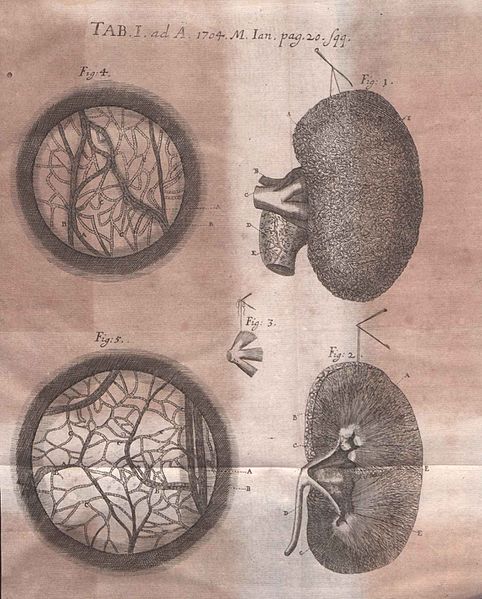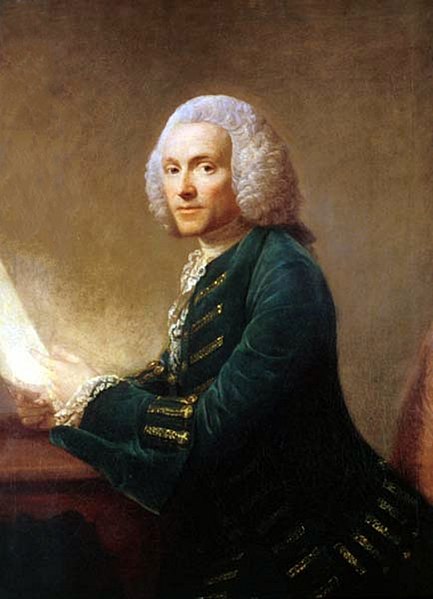Frederik Ruysch was a Dutch botanist and anatomist. He is known for developing techniques for preserving anatomical specimens, which he used to create dioramas or scenes incorporating human parts. His anatomical preparations included over 2,000 anatomical, pathological, zoological, and botanical specimens, which were preserved by either drying or embalming. Ruysch is also known for his proof of valves in the lymphatic system, the vomeronasal organ in snakes, and arteria centralis oculi. He was the first to describe the disease that is today known as Hirschsprung's disease, as well as several pathological conditions, including intracranial teratoma, enchondromatosis, and Majewski syndrome.
Frederik Ruysch, by his son-in-law Juriaen Pool
The Anatomy Lesson of Dr. Frederick Ruysch by Jan van Neck (1683). Amsterdam Museum.
Illustration of critique of Thesaurus anatomicus... published in Acta Eruditorum, 1704
Embalming is the art and science of preserving human remains by treating them to forestall decomposition. This is usually done to make the deceased suitable for viewing as part of the funeral ceremony or keep them preserved for medical purposes in an anatomical laboratory. The three goals of embalming are sanitization, presentation, and preservation, with restoration being an important additional factor in some instances. Performed successfully, embalming can help preserve the body for many years. Embalming has a very long and cross-cultural history, with many cultures giving the embalming processes religious meaning.
William Hunter developed and popularized the modern technique of arterial embalming in the late 18th century.
Embalming fluids used in the early 20th century
Instruments used for embalming
Tank containing embalming fluid







